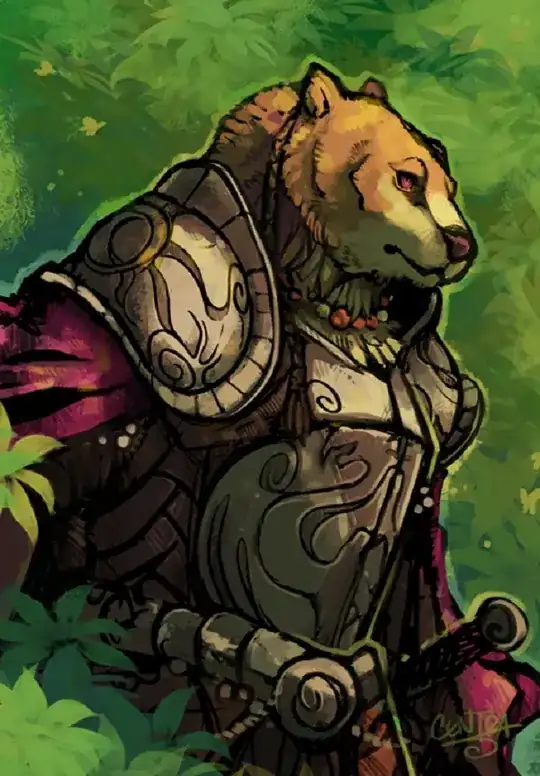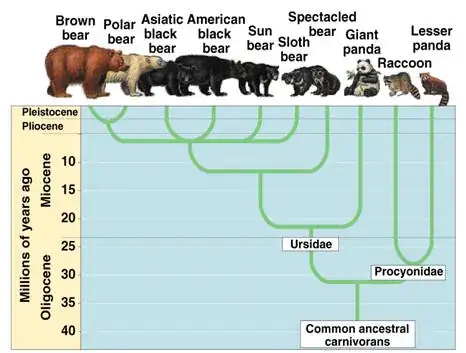That's a pretty big set of questions. To be realistic this is impossible, bears are not geared for intelligence and have no reason to become so, they're some of the most powerful animals on the planet. But reality aside let's have a look.
What animals and in what conditions would evolve into something resembling a bearfolk like this one?
Well bears obviously, the other answer sums it up very well.
How long is estimated the time for something like this to ever evolve starting from the 24th century?
Short answer a while, long answer on the order of millions of years. Though genetic tinkering by humans could make the work quicker and more targeted, perhaps reducing the time to only a few hundred thousand years, less if your world's genetic engineering tech is hyper-advanced.
What else could speed up the evolution of a bearfolk?
You would need an environment which favoured their traits; bipedalism, intelligence, good vision. This would suggest a habitat of primarily flat land, on which they are predated. They would have to be social (unlike real world bears) and live in close communities.
Would it develop sexual dimorphism?
Probably not as much as humans, though that rather depends on how their proto-culture develops. Bears have a heightened sense of smell and can detect pheromones, therefore they can identify the sex of an individual without sight. Losing that ability as humans did might spur more differences.
How high are the chances of it having naturally greater potential in intelligence than humans?
Like humans they would start out less intelligent and grow over time; it could easily outpace modern humans given enough time though.
How strong would it be, what limits on strengths can it physically have?
Bipedalism severely limits strength (you now only have two legs to lift with), but they'd easily beat humans if they kept their current build.
How fast can it run and for how much time? does it run on two or four legs?
Faster than a human, that's for sure, but not for very long. Humans are the stamina kings of the animal kingdom, bears can do short bursts of speed but not for very long. And by definition bipeds would run on two legs, leaving the hands free to hold things.
I want it to have rectangular pupils like goats so it can have a field of view of 320°, twice larger than humans. Is it possible or efficient?
No, goats have those pupils because they have eyes on the sides of their heads; it allows them to see behind them easier. Humans (and bearfolk) can just turn their heads around, so a heightened field of view would be pretty unnecessary unless predation from all sides was a serious threat.
Hope this helped you somewhat.

